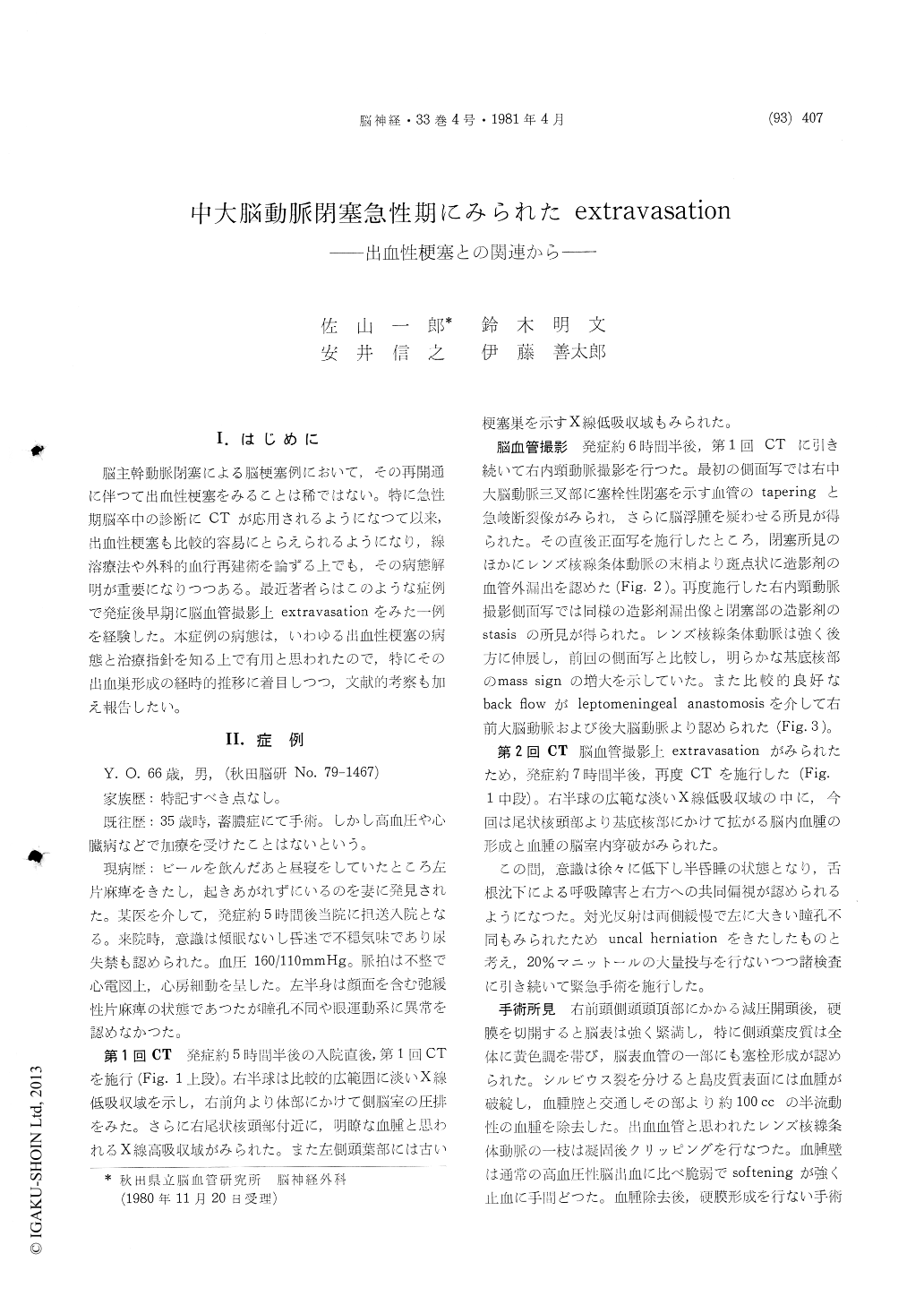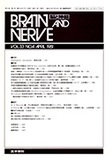Japanese
English
- 有料閲覧
- Abstract 文献概要
- 1ページ目 Look Inside
I.はじめに
脳主幹動脈閉塞による脳梗塞例において,その再開通に伴つて出血性梗塞をみることは稀ではない。特に急性期脳卒中の診断にCTが応用されるようになつて以来,出血性梗塞も比較的容易にとらえられるようになり,線溶療法や外科的血行再建術を論ずる上でも,その病態解明が重要になりつつある。最近著者らはこのような症例で発症後早期に脳血管撮影上extravasationをみた一例を経験した。本症例の病態は,いわゆる出血性梗塞の病態と治療指針を知る上で有用と思われたので,特にその出血巣形成の経時的推移に着目しつつ,文献的考察も加え報告したい。
Following an embolic occlusion of a major cere-bral artery with peripheral migration of emboli in the early stage, cerebral haemorrhage from the recanalized perforators may occur in the infarcted zone. The following is a report of such a case.
This 66-year-old man with normotension suffered from sudden unconsciousness and left-sided paresis.
On admission to our clinic five hours after onset, the patient was confused with urinary incontinence, left hemiplegia and irregular pulse.
The first CT examination, which was performed immediately after admission, showed a small-sized haematoma surrounded by an obscure broad low density area in the region of the right caudate nucleus.
Right carotid angiography which was performed after CT scan revealed an occlusion at the trifurca-tion level of the right middle cerebral artery and extravasation of contrast media from the right lenticulostriate arteries. Because of deterioration of the patient's condition, a second CT scan was done showing an extensive haematoma in the whole basal ganglionic region with ventricular rupture.
An emergency decompressive craniectomy with evacuation of the haematoma was carried out with immediate postoperative improvement of the pa-tient's condition.
Judging from the mode of onset, clinical course as well as neuroradiological and preoperative find-ings, the pathogenesis behind the haemorrhagic in-farction could be interpreted as follows:
At the onset, a thromboembolic occlusion prob-ably occurred in the right internal carotid artery with lack of sufficient collateral circulation.
Before or during the first CT examination, the embolus may have migrated to the middle cerebral artery. Therefore, the reflow in the perforatingarteries in the head of the caudate nucleus could have led to a haemorrhage in the infarcted area.
Furthermore, the insufficiency of the lenticulos-triate arteries expressed by extravasation of con-trast media might be due to the high pressure reflow of the ischaemic vessels with increased per-meability after further peripheral migration of the embolus.
As a result, a huge and extensive haemorrhage took place in the infarcted area in the basal-gan-glionic region.
This phenomenon may be identical with the so-called"haemorrhagic infarction".

Copyright © 1981, Igaku-Shoin Ltd. All rights reserved.


